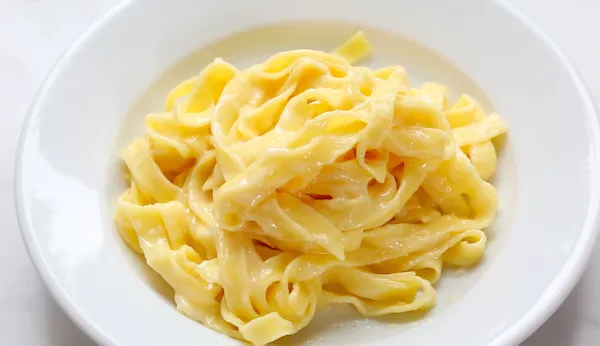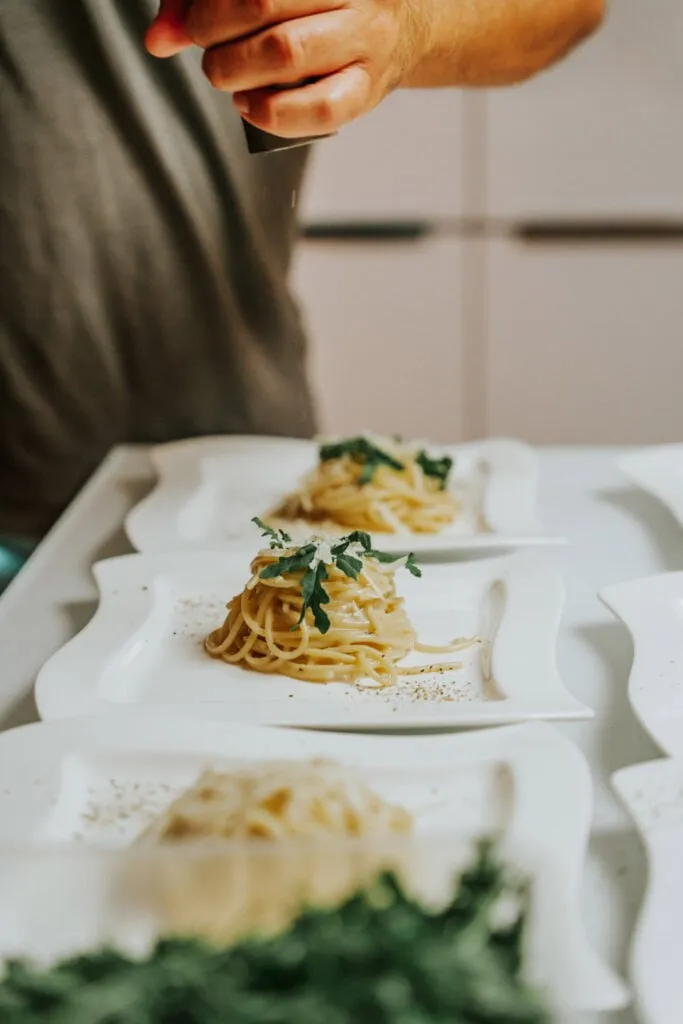Roman cuisine, a vibrant tapestry woven from countless cozy trattorias, traditional osterias, and bustling street food stalls, is always a captivating destination for any Italian food enthusiast. Visiting the Eternal City offers you not only the chance to savor famous dishes but also to immerse yourself in its unique culinary culture, especially by experiencing traditional cooking. Exploring Roman cuisine goes beyond just pizza and pasta; it’s a journey to discover refined, deeply local flavors, where each dish holds a story of rich history and culture.
Roman cuisine is not just about taste; it’s an exploration of history and culture. From simple street food to lavish feasts in elegant restaurants, Roman food always delivers unforgettable experiences. And there’s no better way to understand the local food culture than by stepping into the kitchen yourself and learning to prepare traditional dishes. A Roman cooking experience is more than just a tourist activity; it’s an opportunity to connect deeply with the local culture, uncover culinary secrets passed down through generations, and create lasting food memories.
Why Experience a Traditional Roman Cooking Class?
Experiencing a traditional Roman cooking class offers benefits and values far beyond just a delicious meal. It’s a journey to explore Italian culinary culture in a complete and profound way:
- Gain a deeper understanding of local food culture: Participating in a cooking class or learning recipes and preparing Roman dishes yourself helps you understand the ingredients, cooking techniques, and culinary customs of the locals. You’ll discover that Roman cuisine is not just about recipes but also an integral part of the history, traditions, and lifestyle of the Romans.
- Uncover cooking secrets and techniques: Traditional cooking classes are often taught by experienced local chefs who share culinary secrets and techniques passed down through generations. You will learn how to choose fresh ingredients, how to harmoniously combine spices, and how to prepare dishes with authentic Roman flavors.
- Create memorable culinary experiences: Preparing and cooking traditional Roman dishes yourself will be a unique and memorable travel experience. You will not only enjoy the food you create but also have stories and memories to share with friends and family after your trip.
- Connect culture and cuisine: Food is an essential part of culture. Experiencing traditional Roman cooking helps you connect culture and cuisine in a natural and engaging way. You will gain a deeper understanding of Roman history, customs, and daily life through the dishes they love and cherish.
- Enhance your cooking skills: Whether you are a beginner or an experienced cook, learning to cook traditional Roman dishes will help you improve your cooking skills. You will become familiar with new ingredients, diverse cooking techniques, and expand your culinary knowledge.
Suggested Ways to Experience Roman Cooking
There are many ways to experience traditional Roman cooking, depending on your preferences and time:
Join a Cooking Class
This is the most common and effective way to learn Roman cuisine. Many cooking classes are organized in Rome, from short courses for tourists to more in-depth programs. Classes often focus on traditional dishes such as pasta carbonara, cacio e pepe, Roman pizza, or regional meat and vegetable specialties.

Advantages:
- Professional guidance: You will be guided by experienced chefs, ensuring you learn the correct techniques and recipes.
- Engaging learning environment: Classes are often held in cozy kitchen spaces, creating a comfortable and friendly atmosphere.
- Time-saving: Ingredients and tools are provided, saving you preparation time.
- Cultural exchange: Classes offer an opportunity to interact with people from around the world who share a passion for food.
Disadvantages:
- Cost: Cooking classes are usually more expensive than self-learning.
- Fixed schedule: You need to arrange your time to fit the class schedule.
Self-Learning to Cook at Home
If you don’t have much time or want to save money, you can learn to cook Roman dishes at home. Many online resources, cookbooks, and video tutorials are available for your reference.
Advantages:
- Cost-effective: You don’t need to pay tuition fees and can use ingredients and tools already in your kitchen.
- Time flexibility: You can learn whenever you have free time and at your own pace.
- Creative exploration: You can freely experiment and adjust recipes to your personal taste.
Disadvantages:
- Requires more time and patience: Self-learning requires you to research, study, and practice many times to succeed.
- Difficulty when encountering errors: If you encounter difficulties during cooking, you won’t have direct guidance to help.
- Uncertain quality: Recipes online may not be accurate or may not suit your taste.
Combine Food Experiences and Cooking
Another exciting way to experience traditional Roman cooking is to combine visiting local markets, enjoying street food, and then preparing the dishes you’ve tried yourself.
Suggestions:
- Visit Campo de’ Fiori Market: This famous market is where you can find all kinds of fresh ingredients, local specialties, and Italian spices. Take time to stroll around the market, admire the stalls, and choose the ingredients you love.
- Enjoy street food: Rome has countless delicious street food options such as pizza al taglio, supplì, trapizzino… Try these dishes to experience the distinctive flavors of Roman cuisine.
- Find recipes and cook: After having real-world experiences and ingredients in hand, you can search for recipes of the dishes you’ve tried and start cooking at home or in a serviced apartment with a kitchen.

Traditional Roman Dishes to Try and Cook
Here are some famous traditional Roman dishes you should try and learn to cook:
1. Pasta Carbonara:
Rome’s iconic pasta dish, carbonara is a perfect combination of eggs, pecorino romano cheese, guanciale (cured pork cheek), and black pepper. Cooking carbonara is not difficult but requires technique to create a smooth, creamy sauce that coats the pasta evenly.
- Cooking Experience: Many cooking classes in Rome teach how to make carbonara. You can also find recipes online and try cooking at home. The most important thing is to use the right ingredients and techniques to achieve the authentic flavor.
2. Cacio e Pepe:
Simple yet sophisticated, cacio e pepe consists only of pasta, pecorino romano cheese, and black pepper. The secret of this dish lies in creating a creamy sauce from pasta water and cheese, along with the pungent aroma of roasted black pepper.
- Cooking Experience: Cacio e pepe is an easy dish to cook at home. You can find recipes and video tutorials online. Experiment with different amounts of pepper to find your preferred taste.

3. Carciofi alla Romana (Roman-style Artichokes):
Artichokes are a specialty vegetable of the Lazio region, and carciofi alla romana is a simple dish that clearly showcases the natural flavor of artichokes. Artichokes are stuffed with garlic, parsley, and mint, then braised in olive oil and white wine.
- Cooking Experience: This dish might be slightly more complex if you are not familiar with preparing artichokes. However, there are many detailed recipes and video tutorials to guide you.
4. Pizza Romana (Roman-style Pizza):
Roman pizza differs from Neapolitan pizza in its thinner and crispier crust. The toppings on Roman pizza are also diverse, from classics like Margherita and Marinara to more creative variations.
- Cooking Experience: Taking a pizza-making class is a fun experience in Rome. You will learn how to knead dough, shape the pizza, and bake pizza in a traditional wood-fired oven.
5. Maritozzi:
Maritozzi are traditional Roman sweet buns, usually eaten for breakfast or as dessert. Soft, sweet bread rolls are split and filled with whipped cream.
- Cooking Experience: Making maritozzi at home can be more time-consuming as you need to make both the bread and the cream. However, the result is a delicious, rich, and authentically Roman pastry.

Tips for Your Roman Cooking Experience
- Learn about the dish beforehand: Before you start cooking, research the dish you want to make, from ingredients and recipes to cooking techniques.
- Choose fresh ingredients: The quality of ingredients is crucial to the flavor of the dish. Prioritize using fresh ingredients, especially seasonal fruits and vegetables.
- Don’t be afraid to experiment: Cooking is a creative process. Don’t be afraid to experiment and adjust recipes to suit your taste.
- Enjoy the cooking process: Savor the process of preparing, cooking, and sharing the food with loved ones. A cooking experience is not just about creating a delicious dish but also about joy and connection.
- Seek local inspiration: Read cookbooks, food magazines, and watch cooking shows about Roman cuisine to find more ideas and new recipes.
Experiencing traditional Roman cooking is a fascinating and meaningful journey of culinary and cultural discovery. Whether you choose to join a cooking class, self-learn at home, or combine food experiences with cooking, the most important thing is to open your heart to embrace and enjoy the unique flavors of Roman cuisine. Let your cooking experience become an integral part of your trip to Rome, helping you deeply understand the culture and people of this place, while bringing back unforgettable culinary memories.